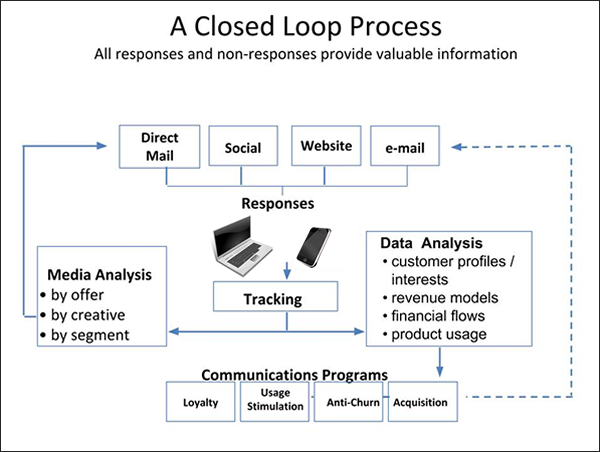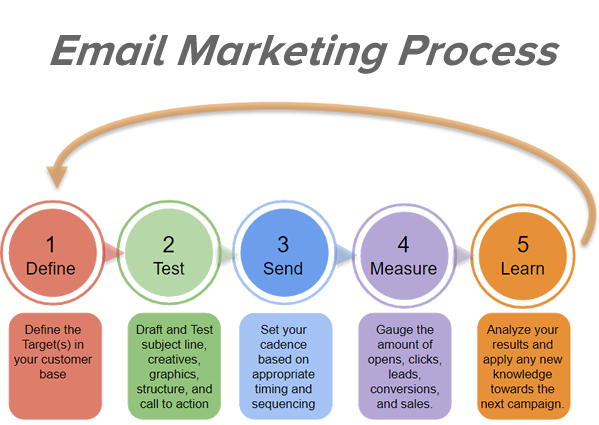PMAs and Email Campaigns
We’ve already talked about customer segments, personas, behavior, and value. Now, we’ll focus on using this knowledge to design comprehensive, intelligent, and targeted customer journey-based email campaigns. This is an essential step towards maximizing the potential of every one of your customers. For many companies, email is a primary channel through which they communicate with their customer base and obtain intelligence about their customer universe. In this article, we’ll take a closer look at the targeting capabilities of email when it is launched from a PMA – either alone or as part of a larger digital campaign.PMAs – Changing the Way Organizations Think
As we’ve stated before, marketing is only effective when you send the right message, to the right person, at the right time. Sending too many (or too few) messages, irrelevant content, or poorly timed emails can cost you customers, sales, and possibly even your IP (Internet Protocol) reputation. This basic marketing axiom applies to all channels – digital or traditional. PMA’s are unique platforms that capture promotion history, along with behavioral and purchase data. These platforms offer marketers an extremely powerful email marketing capability in their digital toolbox. One of a PMA’s greatest benefits is the ability to supply the tools, framework, and intelligence necessary to be a continuously learning organization that supports a culture of testing and learning over time. This includes tracking different segments of customers as they are exposed to various social media treatments, their e-commerce shopping behaviors, and communications through email.
A Continuously Learning Organization
A continuously learning organization strives to get smarter about all aspects of their marketing mix. These marketing agencies attempt to understand the sensitivities around positioning, media, and pricing through a rigorous ongoing program of marketing research and testing.Learning Cycles
The digital realm has essentially created a new culture in the marketing field – particularly regarding the rate at which learning cycles can be created. In the old days of catalog marketing, firms would spend weeks deciding which content to put into a catalog. From there, it would have to be sent to a printer, bound, and mailed out. Then, more time would be consumed waiting for orders to actually come in. As a result, there was typically a 3 month learning cycle associated with catalog and direct mail. Therefore, developing, implementing, and testing various strategies was a much slower, drawn out process.Email – Speeding up the Cycle
Fast forward to the present. With email, an entire learning cycle can take place within 5 days or less. Here are the three key steps necessary to execute a modern email campaign:- Draft email (1 day or less)
- Configure email/images/graphics for sending (1-2 days)
- Analyze results (2 days)
Campaign Considerations
Typically, at the beginning of a customer’s journey with your brand, you have minimal practical information about them. However, as time goes on, the scope of information grows. If you make it a priority to continuously test and learn more about your buyers and their respective purchase cycles, you will have many more actionable insights to incorporate into subsequent campaigns. The list below elaborates upon essential components to consider throughout this process.Holidays/Seasonality
When mapping out a customer’s journey, one typically looks at it across a marketing calendar. Marketers are always looking for legitimate reasons to communicate with customers, and two perfect examples are holiday and seasonal sales. For instance, the automotive industry takes advantage of most holidays (i.e. President’s Day, Memorial Day, Labor Day) as catalysts to drive consumers into their showrooms. Can you remember a major holiday that didn’t have “sales?” Probably not! Seasonality is another important factor when planning your customer communication methods. Depending upon what product(s) you sell, people typically buy at different times of the year. For example, a golf retailer surely sells more clubs and gear in the spring and summer months than fall and winter (at least in regions that truly experience all four seasons). Additionally, clothing companies certainly sell more t-shirts, shorts, and bathing suits when the weather is warmer.Media Plan Synergies
It is undeniable that multiple impressions across channels are more effective than single channel campaigns. Therefore, always coordinate your omnichannel campaigns to complement each other. For example, combining email and direct mail offer a very effective one-two punch!Email/Direct Mail Combinations
Both email and direct mail can be designed in a way that they complement each other. The following statements are based upon the old adage of 1+1=3:- If you send an email, you’ll get one sale.
- If you send a catalog, you’ll get one sale.
- If you send both simultaneously, you’ll get three sales.
Testing
Always strive to close the loop on your marketing campaigns by testing different strategies and learning over time. Use these insightful metrics to review the success of each campaign:- Gauge efficiency by measuring revenue per thousand emails, in addition to opens, clicks, and conversions.
- Analyze which items your customers purchased or browsed on-site after clicking through your email (considering they did in the first place).
- Compare your results against your key driving KPIs.

A/B Testing
You may not initially know the best way to interact with different parts of your customer base. You can obtain this knowledge through both a PMA’s Test and Roll and Split Test features. Your subject line is the first thing your customers see in their inbox, and a carefully crafted one can substantially increase open rates. Therefore, send two different subject lines to a subset of your customer base. Your PMA can be set up to test two or more subject lines in parallel, providing statistically significant results. Once statistical significance is achieved for open and conversion rates, the PMA will automatically send emails with the winning subject line to the remaining members of your base. This process is referred to as Test and Roll. The same type of test can be implemented for creatives/content as well. Meanwhile, a traditional split test is similar to a test and roll, except that you implement the test for your entire customer base. One half gets one subject line/content, while the other gets a different treatment.Timing and Sequencing (Cadence)
A carefully crafted message accomplishes little if your target never sees it, and the top of the inbox is a competitive piece of real estate. If you miss the mark and send your email just a few hours away from a customer’s ideal timeframe, you could easily wind up 50 emails down the list – out of sight and out of mind. Key factors to consider regarding cadence include:- Time of day
- Day of week
- Number of emails per week
- Date of last open
-
-
- Long gaps since the last open can indicate customers fading or inactive in your Buyer Lifecycle. If this gap lengthens, consider dropping from them from your list.
- This also helps maintain your IP reputation by avoiding getting categorized as spam.
-
Conclusion
Ultimately, your emails serve as the face and voice of your brand. Proper usage of this powerful channel drives revenue and distinguishes your brand from the rest. Not only does email allow you to send out a variety of messages to different customer segments, it also allows you to gather useful intelligence both quickly and inexpensively. PMAs help organizations continuously test and learn while handling the basics, blocking, and tackling of campaigns. Consistent, accurate, informed testing can greatly impact your conversions and bottom line. By engineering controlled tests and gathering verifiable data, you can determine precisely which marketing strategies work best for both your brand and your product(s). Keep in mind that this is a process, and that multiple types and forms of testing can (and should) be executed over time to gather more actionable intelligence. Remember, if your organization is not continuously learning, then you are likely not growing at the rate your competitors are.Today\’s competitive marketplace requires continuous learning about customers and the best ways to communicate with them. As a result, marketing tools are rapidly evolving. Artificial Intelligence (AI), machine learning, and expert marketing systems are being built into PMAs – providing marketers more sophisticated approaches to gain marketing efficiencies. Up next in Step 5, we’ll examine two new leading edge capabilities, during which you will learn how to use a PMA\’s AutoPilot software in tandem with the Buyer Lifecycle. About the Author: Gary’s background includes over 30 years of analytics & database innovation for several leading Fortune 500 companies and Madison Avenue advertising agencies. Gary has been a frequent lecturer and author on the topics of database marketing and applied statistics. His articles have been published in DM News, Direct Marketing and the Journal of Direct Marketing. He recently was President of the Direct Marketing Idea Exchange and served on their Board. Gary received his M.S. in Industrial Administration from Carnegie Mellon University. Any further questions or insight? Email Gary at gbeck@buyergenomics.com.





